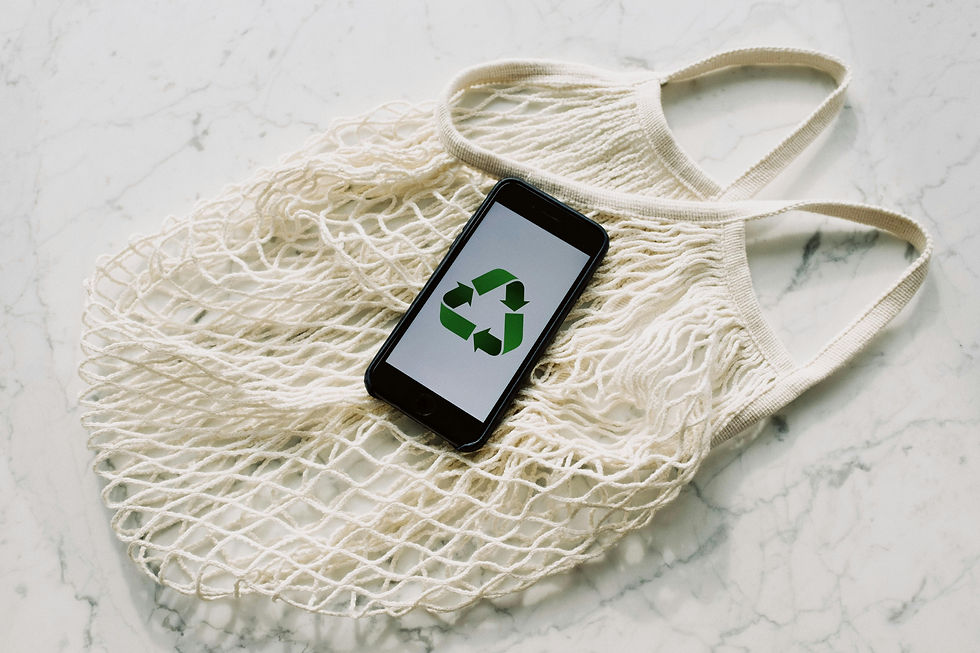Exploring the Rise of QR Code Payments in Modern Retail
- Jul 25
- 4 min read
In recent years, the retail landscape has undergone a dramatic transformation, driven largely by technological advancements and changing consumer behaviors. One of the most notable trends to emerge has been the use of QR code transactions. As mobile payments gain popularity, many retailers are adopting QR codes as a simple, efficient way to facilitate transactions. In this post, we will explore the rise of QR code payments in modern retail, the benefits they offer, and how they are changing the shopping experience for consumers.
QR Code Transactions: The New Payment Method
QR codes, or Quick Response codes, are two-dimensional barcodes that can store a wide range of information. Originally designed for tracking automotive parts, they have evolved into a powerful tool for various industries, particularly retail. With the rise of smartphones, QR codes have become an integral part of the payment process. Customers can easily scan a code with their device to complete a transaction, making payments faster and more convenient.
Retailers have been quick to adopt these codes, and the statistics are telling. According to a report from Research and Markets, the global market for QR code payments is projected to reach USD 30 billion by 2025. This exponential growth highlights how consumers are increasingly opting for QR code transactions instead of traditional payment methods like cash or credit cards.

The Benefits of QR Code Payments
The appeal of QR code payments lies in their simplicity and efficiency. Here are some key benefits for both retailers and consumers:
Enhanced Customer Experience
QR code transactions provide a seamless checkout experience. Customers no longer need to fumble for their wallets or credit cards. Instead, they can simply scan the code with their smartphones, process the payment instantly, and receive confirmations digitally. This streamlined process reduces wait times and minimizes frustration.
Safety and Hygiene
In a world that is increasingly concerned about health and safety, QR code payments offer a contactless alternative to traditional payment methods. Shoppers can avoid physical interactions with cashiers and payment terminals, reducing the risk of contamination. This has become particularly relevant during ongoing public health concerns.
Cost-Effective Solution for Businesses
Implementing a QR code payment system can be significantly cheaper for retailers compared to traditional point-of-sale systems. Businesses do not always need to invest in expensive hardware; many existing systems can be integrated with QR technology. This makes it an attractive option for smaller retailers or those looking to reduce costs.
Increased Security
QR codes can add a level of security to transactions. Unlike traditional credit card transactions that can be vulnerable to fraud, QR codes utilize encrypted data, making it more difficult for hackers to intercept sensitive information. This added layer of security helps businesses and consumers feel more confident in their transactions.
How Do I Pay with a QR Code?
Paying with a QR code is straightforward. Here's a step-by-step guide to help you understand the process:
Download a Mobile Payment App: Ensure you have a mobile payment app that supports QR code transactions. Apps like PayPal, Venmo, and various banking apps often offer this feature.
Select the Payment Option: When making a purchase, opt for the QR code payment method at checkout.
Scan the Code: Use your mobile device's scanning feature to scan the QR code displayed by the retailer.

Confirm Payment: Follow the prompts to confirm the transaction amount and complete the payment. You may receive a confirmation on your device once it’s successful.
Keep Your Receipt: Always save or screenshot your digital receipt for your records to ensure smooth purchasing in the future.
Practical Example of QR Code Payments in Action
Consider a popular grocery store that has implemented QR code payment systems. Customers no longer need to stand in long lines. Instead, they can scan the QR code at various self-checkout kiosks, significantly speeding up the process. This grocery store also utilizes promotional QR codes on products that link directly to digital discounts—creating an interactive shopping experience.
The Role of QR Code Payments in E-Commerce
While most discussions about QR codes focus on physical retail, their impact on e-commerce is becoming more significant. More online retailers are using QR codes in advertising and promotional campaigns. For example, consumers might see a QR code on a digital ad, scan it, and be directed to an online store to make a purchase.
E-commerce platforms are also integrating QR codes into their checkout processes. By allowing customers to complete purchases using QR codes, businesses can reduce cart abandonment rates and enhance overall customer satisfaction.

The Future of QR Code Payments
As technology continues to evolve, so too will the application of QR codes in retail. Here are some future predictions regarding their use:
Increased Adoption by Traditional Retailers: As consumers become more accustomed to mobile payments, more traditional retailers will likely adopt QR code systems. This includes brick-and-mortar stores and restaurants, further integrating technology into the shopping experience.
Greater Interactivity with Customer Engagement: QR codes will play a significant role in enhancing customer engagement. Retailers may embed QR codes in marketing materials, allowing customers to easily access promotions, product information, and loyalty points.
Integration with Other Technologies: QR codes are expected to work alongside augmented reality and artificial intelligence to offer personalized shopping experiences. For instance, scanning a code might launch an AR experience that shows the product in use.
Rise of Mobile Wallets: As digital wallets gain prominence, QR code payments will be an essential component of these services. Consumers will be able to make transactions and access multiple payment methods from a single app.
Embracing Change in the Retail Landscape
For retailers, adapting to new technology is not just an option but a necessity. The rise of QR code payments is transforming shopping habits and enhancing customer experiences. By embracing this technology, retail businesses can remain competitive and ensure customer satisfaction.
As you explore the world of QR code transactions, consider how these systems can benefit your business or enhance your personal shopping experiences. Whether you’re a retailer wanting to modernize your payment systems or a consumer looking for speed and convenience, QR code payments are here to stay.
Incorporating efficient payment methods such as qr code payment can streamline the checkout process and elevate the overall shopping experience. Embrace the change and step into the future of retail payments today.



Comments